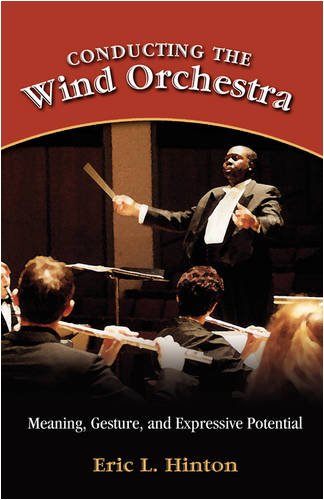Conducting the Wind Orchestra: Meaning, Gesture, and Expressive Potential Review

This book examines the conductor's methods in terms of the realization of expressive potential in a selected body of works. This examination encompasses analytical, technical, and expressive gestural aspects of the art and craft of conducting. The author also discusses the idea of meaning in music and ways, both musical and extramusical, in which meaning arises in performance. In this unique study, the author also considers how the use of physical gestures may have an impact upon the realization of expressive potential in a given work and, in particular, upon those works selected for discussion. Central to this process is the notion that there is something "behind the notes." Text-based modes of analysis do not afford access to music as it is created by the actions of performers and conductors. The author argues that this music often has strong extroversive associations. Inquiry limited to the text neither helps the interpreter to realise fully the expressive or communicative potential of that work, nor does it fully consider the impact of expressive issues on performance. Thus, the conductor acts as a mediator in this process, taking the work and all relevant information surrounding it into account as it is prepared for performance. It is within this context that the author examines John Corigliano's Overture from Gazebo Dances, Karel Husa's Introduction and Fanfare from Music for Prague 1968, Edward Gregson's Celebration, and Morning Music by Richard Rodney Bennett, with regard to their expressive potential and adopts topical analysis in a general way as a point of departure in an attempt to relate this potential to physical gestures, facial expressions, and body language in the art and craft of conducting. In addition, the author considers the applicability of the analytical tools developed in the study to the actual practice of performance with regard to the works discussed, and attempts to show the relationship between the analysis of a given work, the physical manifestation of what that analysis uncovers, and the realisation of expressive potential in performance. This book will help readers better understand the relationship between the conductor's physical gestures, body language and facial expressions, and the expressive potential of selected works for the wind orchestra. As a book that clearly reflects the author's passion, it will be a welcome addition for collections in music.


No comments:
Post a Comment